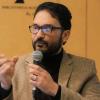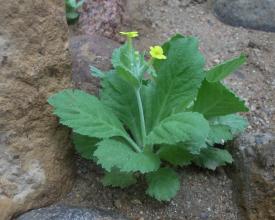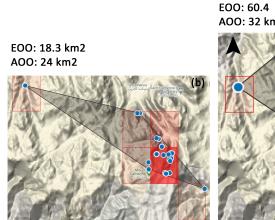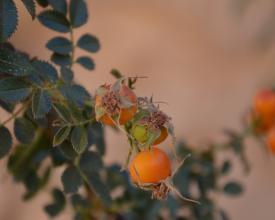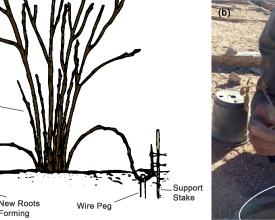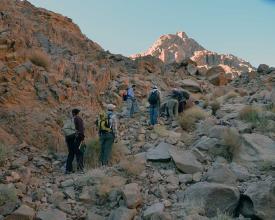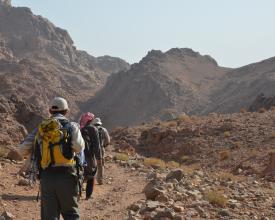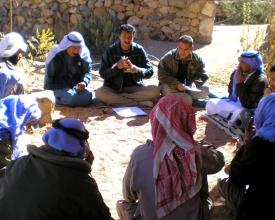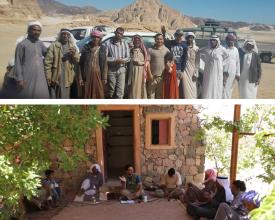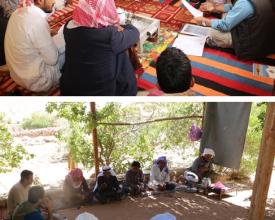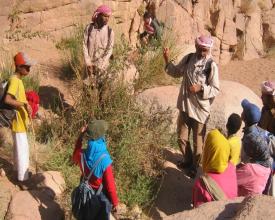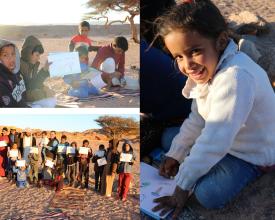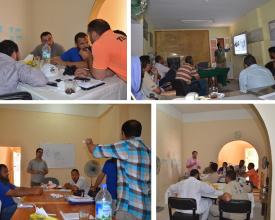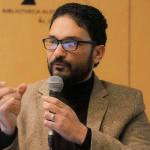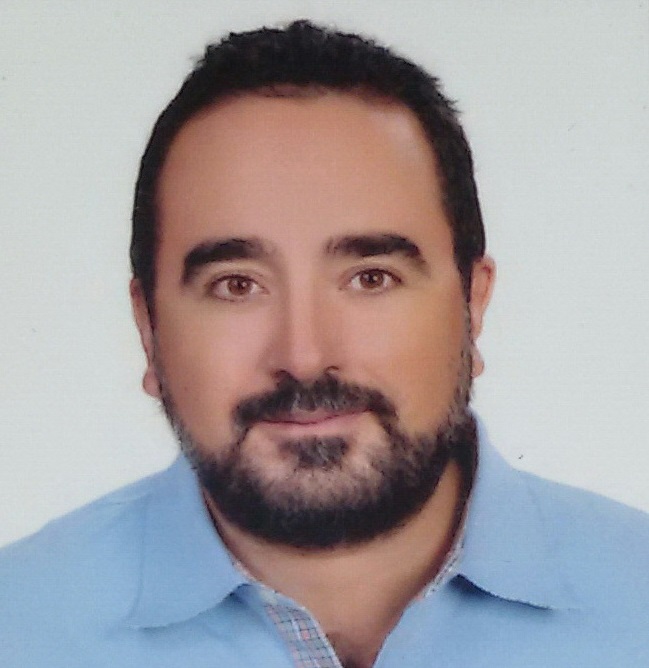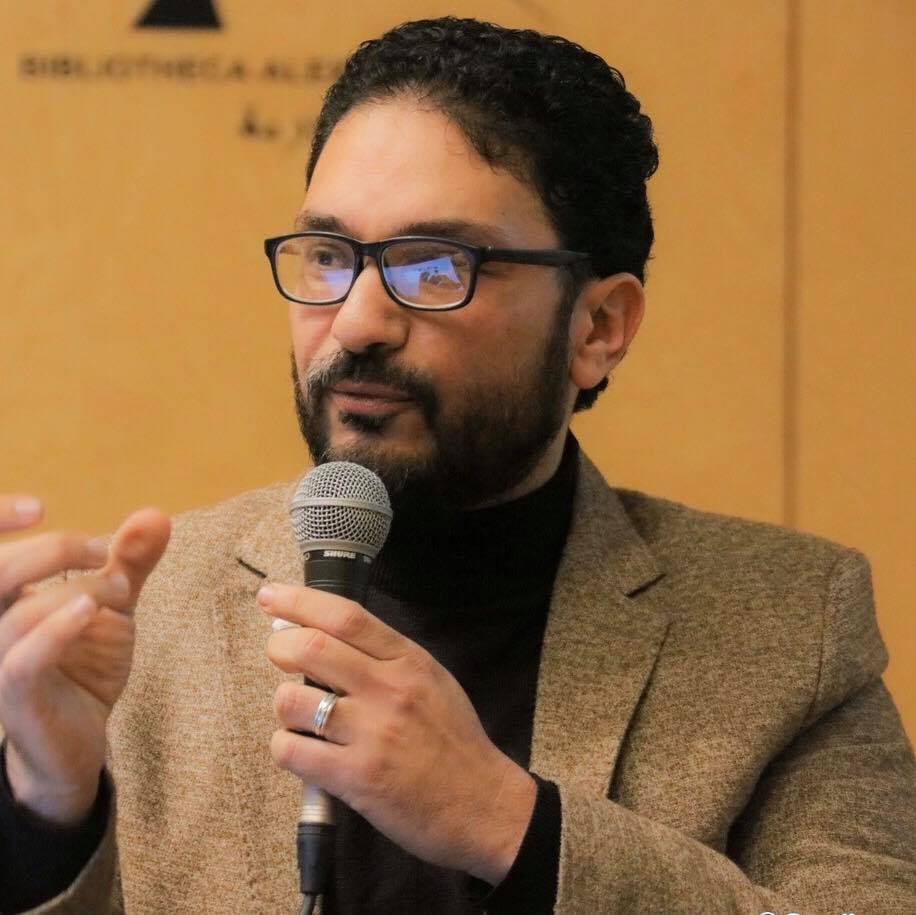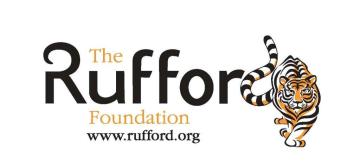
Can we save critically endangered relict endemic plant species? A case study of endemics in Egypt
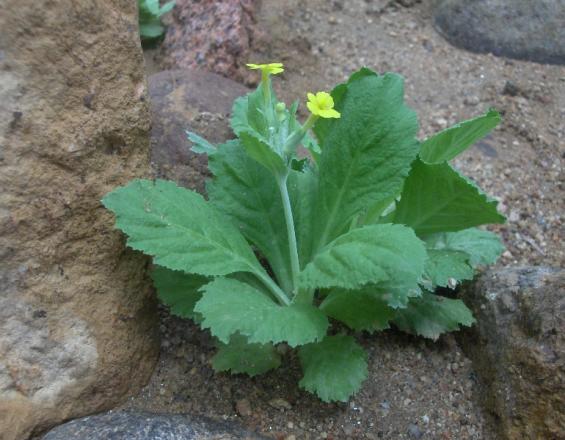
Rosa arabica and Primula boveana is a perennial endemic to the high mountain area of St. Catherine Protected Area (SCPA) in Egypt and listed as one of the most 100 threatened plants in the world. Recently, they listed as Critically Endangered due to their small Extent of Occurrence and tiny population size (less than 90). The continuous decline in habitat quality for this species and the urgent need to carry out on-ground conservation actions were reported. Many attempts were made in the past to cultivate them in the wild, but they did not succeed. So, this solution aims to conserve them through in situ practices by implementing the following steps, respectively: a) IUCN Red List, b) Ecological Niche Modeling, and c) based on the previous two steps, translocation process for R. arabica in the suitable habitat will be done after carrying out simple layering process (local community traditional method) as one of the most effective traditional vegetative methods for wild cultivation for this species.
Context
Challenges addressed
Many attempts were made previously to propagate R. arabica in the wild, but they were unsuccessful, due to the difficulty of breaking the dormancy of the seed, which, even after laboratory treatments for more than 16 months, the germination rate does not exceed 5%, and the survival rate does not exceed 0.5%. Tissue culture is expensive. The number of individuals in the wild is constantly decreasing and the seeds do not germinate in the wild. In early 2017, after discussing the problem with the local community, they explained to us an old method of vegetative propagation (layering) that they use in their gardens in the mountains. And by experimenting with it inside a garden, it proved successful in producing a new individual from the mother plant (a separated branch). After conducting field studies for the distribution of individuals, we worked together with the local community to produce new individuals similar to the mother and plant them separately from them in other places to increase the spread.
Location
Process
Summary of the process
The main purpose is to preserve the natural resource and ensure its sustainability
1- Improving knowledge about the target species supports the establishment of an accurate conservation program, feeds training, awareness, and documentation programs, and creates a space for discussion with the local community about implementation steps.
2- Involving the local community in planning improves knowledge about target species, transmits traditional knowledge, reduces gaps, increases trust, ensures continuity, and nurtures awareness and documentation programs.
3- Education, awareness, and documentation programs reduce pressures on natural resources, support decision-makers in traditional ways to conserve natural resources, and protect the rights of the local community from being lost with the death of tribal leaders
Building Blocks
Improve Knowledge about target species
Having valid and up-to-date information on the ecological and conservation status of threatened species is one of the most important elements in the establishment of an effective conservation program. Collecting data about the current geographical range, population characteristics, threats, ecology, and habitat in which species occur will help t determine the suitable habitat for the most effective rehabilitation process. The IUCN Red List is one of the most important tools and indicators for determining the conservation status of biological diversity in the world. As well as Species Distribution Models (SDMs) in determining the potentially suitable habitat for target species.
Enabling factors
To achieve the most accurate results from this block, you must conduct a comprehensive survey of all previous studies and identify the gaps and work to fill them in simple and available ways. You must plan how the data will be collected and the scenarios where it will not be able to obtain. Your team must be trained on how to collect data and standardize methods. Pay attention to cleaning the data before using it in the analysis. Careful review by individuals outside the team to ensure its accuracy
Lesson learned
Reviewing what was done previously and making a plan and alternatives before going to the field is one of the most important factors to save time and to get the goal
Involvement of Local Community in conservation Planning
The local communities that are located inside Protected Area suffer from some restrictions on the use of natural resources, which they believe are their property and right, and that they are the people of the place before the establishment of the PA. Usually, restrictions on the use of natural resources are for the purpose of protection and reducing pressures, which may affect the livelihood of some members of the local community, which they consider a process of denial of their rights. The local community owns cultural wealth that has been passed down from generation to generation on the optimal use of resources, their protection, and their propagation in simple ways. Involving that community in planning processes to protect natural resources will remove many of the penalties, whether for the management of the PA or for the community itself. Traditional knowledge is a hidden treasure that can be used to improve the state of natural resources and enhance the local community's sense of ownership and importance in protecting its resources, which will support the sustainability process and reduce disturbances
Enabling factors
Those in charge of the selection process should map the community’s priorities in this area and points of contention, and identify influential community leaders, heard and loved by their community.
Several initial meetings should be held with community leaders, discussing them and asking for their support to mobilize community participation.
We should go to them in their areas and hold community assembly meetings to elect local representatives to coordinate conservation program activities
Lesson learned
We learned that the local community and its traditional knowledge is a scientific wealth that should never be wasted.
The process of selecting representatives of the local community should be considered carefully, taking into account the conflict between tribes and avoiding the involvement of two dissenting parties.
Alternative opportunities must be provided when the community is prevented from some of its activities for the purpose of conservation
They should be made aware that they have the power to decide and allow communities to prioritize and select quick-impact projects to strengthen support and stimulate local participation.
Education, awareness, and traditional knowledge documentation
Over the past 10 years, we have focused on assessing the conservation status of endemic species and their rehabilitation in the wild. We have made a great effort to preserve it and plan for its sustainability. The most important thing that my team and I reached is that the surrounding community, users of resources, researchers, and decision-makers, whether in the site or in the government away from the place, the private sector, and students even the public can destroy everything we built during the previous years as a result of their ignorance of what we work and its importance to us and them. Dissemination of information is an external protection shield to ensure the sustainability of activities on the site. Continuous training and awareness activities should be in the target area and throughout the country in order to avoid destruction due to ignorance. Also, not documenting the traditional knowledge inherited by the local community is extremely dangerous and its loss is a waste of wealth that will cost the state and the world huge sums to discover again.
Education, awareness, and documentation, could reduce the current and future pressures and reduce the impact and the cost of recovery.
Enabling factors
The most important factor for the success of training and awareness programs is the appropriate choice of the recipient, who preferably has contact, whether from close or from afar, with the natural resource.
Involving the community in planning and implementing conservation programs and agreeing on the sustainability and conservation of the natural resource consolidates the principle of partnership and trust and facilitates the process of documenting their knowledge.
Lesson learned
Share with the community all your next steps and challenges and hear from them their opinions and suggestions, even if they are simple from your point of view.
Teach children in the region to understand the next generation.
Follow-up and engagement of trainees after training and awareness is very useful and works to establish and implant information within them.
Educate stakeholders about the importance of your role for their future and share the decision with them.
Impacts
All the mentioned steps aimed to reduce the impact of threats and the risk of extinction through increasing the population size, the Extent of Occurrence (EOO), and the Area of Occupancy (AOO) using tradichnal knowlage of local community.
Rosa arabica: After a year of traditional local method translocation in the wild, the survival rate ranged from 66 to 100% (10-40% maximum in other methods), the geographical range increased by 65%, and the population size by 6.8%.
Primula boveana: About 140 new individuals were obtained to be added to the current population as a result of this step with an increase of more than 25%. Also, the geographical range (EOO) after adding the recovery sites has increased by 230%.
These steps, if the new individuals contained to grow and adapt it may lead to the expansion of other environmental factors such as climatic and topographical factors that probably increase the resilience of the global population of the species to adverse events.
In addition to the environmental and economic dimension of this experience, the success in restoring the two target species and their dissemination by locally-made means stemming from traditional knowledge is a great thing that reflects the importance of local communities' overlap in conservation programs to bridge gaps and reduce future conflicts and pressures and ensure sustainability.
Beneficiaries
Succeed in rehabilitation for the first time ever had environmental, economic, and societal benefits
Beneficiaries:
Local Community (Gabalia trib)
St. Catherine Protected Area
Nature Conservation Sector
Ministry of Environment
Desert Research Center
Sustainable Development Goals
Story
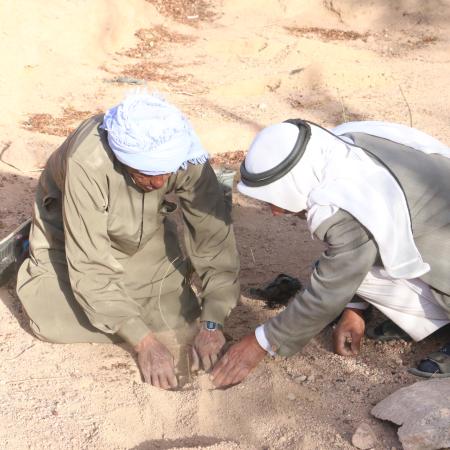
It's nice to have the opportunity to express what's inside of us through this experience. My team and I have been working hard during the past 15 years to save what can be saved from the wealth of our country. We believed that endemic plants are a national and international treasure for science, social, and economy issues. But as human activities continue to expand, ignorance of collecting and documenting information about conservation status for these species will lead to the absence of a conservation plan, which leads to extinction without prior knowledge. Our studies in this region have led us to the conclusion that the priority of conservation should go to the species that are most under pressure, few in number, and in constant decline. With less than 100 individuals remaining in the wild, it has been settled on Rosa arabica, and Primula boveana. Frankly, we tried a lot to rehabilitate them in the wild ignoring the help of the local community (we thought we knew more), but we failed completely. The processes of germination in the laboratory did not succeed, nor did the cultivation in the greenhouses succeed, and we spent years waiting for a disappointing result. By chance, in discussions with the local community, an individual spoke up and said, “I have grown them in my garden before.” Here we were dumbfounded and told him, “could you please teach us how you did that?” We tried an experiment inside his garden and it succeeded in germinating a new individual with the characteristics of the mother and with the ability to adapt. From this moment on, the local community was the main partner in the rehabilitation process, in which the survival rate has reached between 80 to 100%. We followed the traditional local method (simple layering) used by mountain Bedouins to save one of the most threatened species in the world which showed to be cost-effective in arid regions. In a tribal Bedouin society that lives inside a PA governed by the government with insufficient financial resources, the result is always conflict on ownership of resources. In addition to the environmental benefits provided by the success of the rehabilitation program, it has provided the greatest benefit to society and the government represented in the management of the PA, which is participation and a sense of the importance of its role and responsibility towards protecting its natural resources, which ensures its sustainability by protecting the community itself. This is the greatest thing we can do for our country
